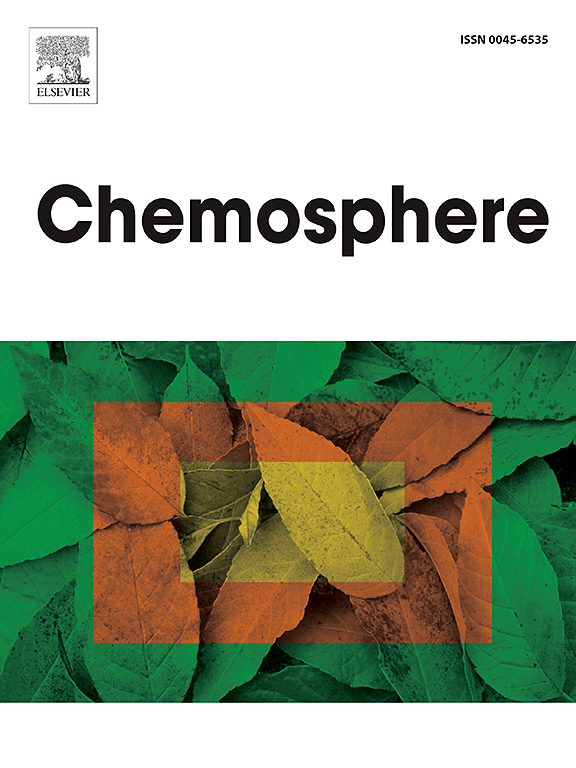钴还原氧化石墨烯杂化物增强析氢反应的协同效应
IF 8.1
2区 环境科学与生态学
Q1 ENVIRONMENTAL SCIENCES
引用次数: 0
摘要
Co-rGO杂化材料将钴纳米颗粒(Co NPs)和还原氧化石墨烯(rGO)结合在一起,利用它们的协同特性来提高析氢反应(HER)效率。本研究采用一锅法,将柠檬酸和水合肼分别作为氧化石墨烯(GO)和Co NPs的还原剂和封盖剂,全面合成和表征了氧化石墨烯功能化的Co NPs。扫描电镜(SEM)证实,二维还原氧化石墨烯片有效地减轻了Co - NP团聚,导致平均粒径约为8 nm。x射线衍射(XRD)分析证实了Co NPs的形成,并表明存在氧化钴(Co3O4 NPs)。为了评估HER性能,我们分析了用还原氧化石墨烯(rGO)、Co NPs和Co-rGO杂化物修饰的玻碳电极(GCE)。与rGO/GCE相比,Co-rGO/GCE的双层电容增加了18倍。此外,Co-rGO/GCE的Tafel斜率较低,为75 mV/dec,优于Co/GCE (105 mV/dec)和rGO/GCE (115 mV/dec),显著改善了催化动力学。计时电流测量测试表明,Co-rGO混合物对HER具有强大的长期稳定性,在较长时间内保持催化活性。这些发现表明,纳米级钴和氧化钴在氧化石墨烯表面和边缘的掺入有效地增强了催化活性位点的密度,从而增强了杂化物对HER的协同特性。这项全面的研究为纳米材料的设计和进步提供了关键的见解,旨在改善各种应用的电催化剂性能。本文章由计算机程序翻译,如有差异,请以英文原文为准。

Synergistic effect of cobalt-reduced graphene oxide hybrid for enhanced hydrogen evolution reaction
The Co-rGO hybrid exhibits a notable integration of cobalt nanoparticles (Co NPs) and reduced graphene oxide (rGO), leveraging their synergistic properties to enhance the hydrogen evolution reaction (HER) efficiency. This study presents a thorough synthesis and characterization of rGO-functionalized Co NPs, employing a one-pot approach where citric acid and hydrazine hydrate serve as reducing and capping agents for graphene oxide (GO) and Co NPs, respectively. Scanning electron microscopy (SEM) confirmed that the 2D rGO sheets effectively mitigated Co NP agglomeration, resulting in an average particle size of around 8 nm. X-ray diffraction (XRD) analysis validated the formation of Co NPs and indicated the presence of cobalt oxide (Co3O4 NPs). To assess HER performance, glassy carbon electrode (GCE) modified with rGO, Co NPs, and the Co-rGO hybrid were analyzed. The Co-rGO/GCE displayed an 18-fold increase in double-layer capacitance compared to the rGO/GCE. Additionally, the Co-rGO/GCE achieved a lower Tafel slope of 75 mV/dec, outperforming both Co/GCE (105 mV/dec) and rGO/GCE (115 mV/dec), highlighting significantly improved catalytic kinetics. Chronoamperometry tests demonstrated the Co-rGO hybrid's robust long-term stability for HER, maintaining catalytic activity over extended durations. These findings imply that the incorporation of nanosized cobalt and cobalt oxide on the rGO surface and edges effectively enhances the density of catalytically active sites, thereby augmenting the hybrid's synergistic characteristics for HER. This comprehensive investigation provides key insights for the design and advancement of nanomaterials aimed at improving electrocatalyst performance for various applications.
求助全文
通过发布文献求助,成功后即可免费获取论文全文。
去求助
来源期刊

Chemosphere
环境科学-环境科学
CiteScore
15.80
自引率
8.00%
发文量
4975
审稿时长
3.4 months
期刊介绍:
Chemosphere, being an international multidisciplinary journal, is dedicated to publishing original communications and review articles on chemicals in the environment. The scope covers a wide range of topics, including the identification, quantification, behavior, fate, toxicology, treatment, and remediation of chemicals in the bio-, hydro-, litho-, and atmosphere, ensuring the broad dissemination of research in this field.
 求助内容:
求助内容: 应助结果提醒方式:
应助结果提醒方式:


